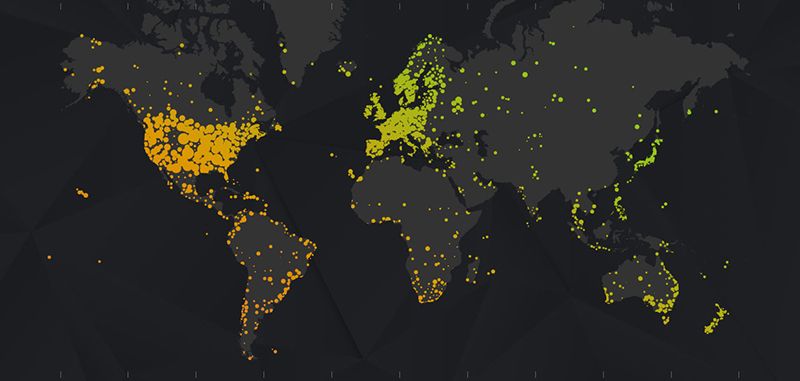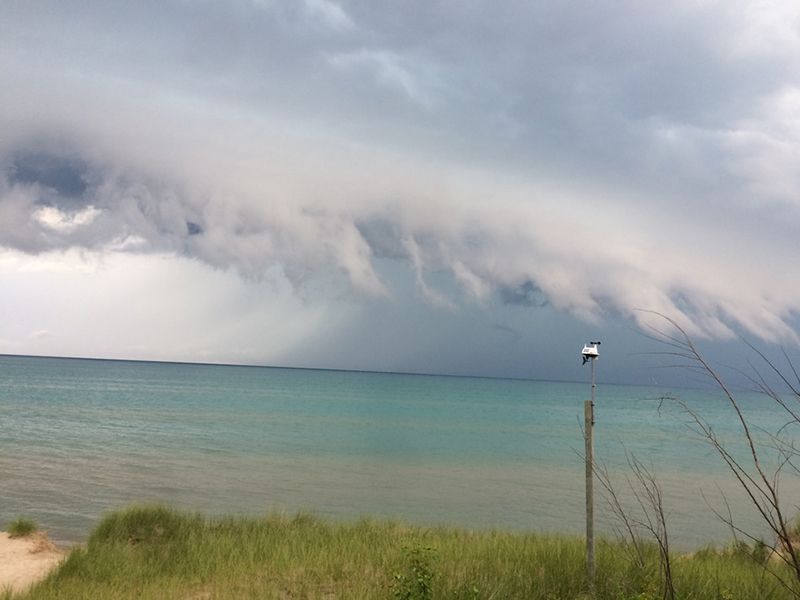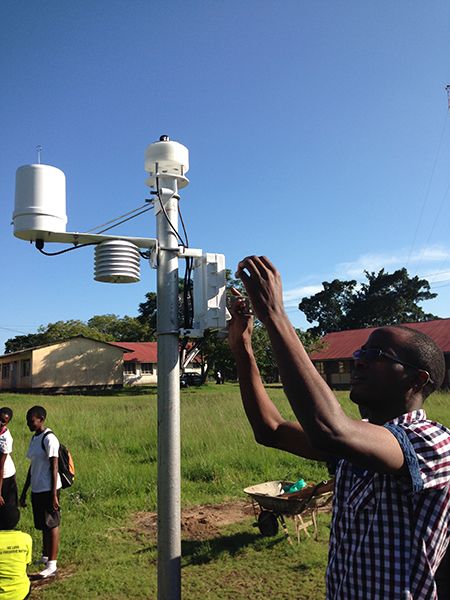IBM’s Watson Takes On Yet Another Job, as a Weather Forecaster
The integration of the supercomputer and weather stations around the world could have a huge impact on global industry
/https://tf-cmsv2-smithsonianmag-media.s3.amazonaws.com/filer/81/35/8135cac3-a280-4f20-8a43-e1c324657556/storm.jpg)
Weather Underground makes weather forecasts based on more than 200,000 privately constructed weather stations across the world, plus public stations, which vary in number by country. The company is adding 400 new stations across Asia, South America, and Africa, and it’ll be integrating all of them with IBM's Watson language-learning AI (the one that played Jeopardy! and won).
So what exactly does this mean? It is creating a global weather forecast system tied into a number of worldwide businesses, and with that, a hope to outmaneuver one of the most costly, damaging variables in global industry—weather.
When IBM bought The Weather Company/WU last October it immediately announced its intention to merge WU's 200,000 weather stations with Watson through the Internet of Things. IoT is not a specific language but rather the concept of uniting many different things under one language so that all their data can be compiled and presented together. Whatever the protocol, weather prediction is worth big money to global companies.
“In the U.S. alone, we know businesses lose more than $500 billion because of weather-related issues each year,” says Mary Glackin, head of science forecasting operations at The Weather Company. IBM and The Weather Company see the aviation, insurance, public utility and agriculture industries as early adopters of WU's Watson-infused weather forecasting tool.
“All of The Weather Company's data can be accessed using a simple published Application Programming Interface (API),” says John Cohn, IBM fellow and chief scientist of design automation. Think of an API as a set of instructions for building a piece of software. It's flexible in that the end-user company can choose what the software will look like. From this digital portal its employees will access the data drawn from weather stations and IoT-connected devices, and Watson ties it together by allowing them to ask questions the way a person asks another person.

“Our initial demonstration, which is already online and working, is around a project called EZ Buddy,” Cohn says, “developed by our IBM research lab in Kenya. EZ Buddy demonstrates how local weather data can be used with local irrigation monitoring and control to help farmers optimize their crop watering.” Farmers text the system from their mobile phones, asking questions such as 'When should I water?' and 'How long until my water tanks are refilled by rain?', and the system texts them answers. Once expanded beyond East Africa, WIoT (Watson IoT) will merge all WU's weather stations with relevant satellite data, lift data from cell phones' pressure sensors, and combine it with local information, such as soil measurements and nearby water stores, to sharpen its weather models both globally and locally. Farmers can use it to manage their irrigation, planting seasons, and pesticide schedules. “It'll demonstrate how commercial interests such as insurers, commercial farming interests, and smarter cities can build commercial systems that combine hyperlocal weather data with cognitive IoT,” Cohn adds.
Airliners already collect turbulence reports through on-board accelerometers and merge the data through The Weather Company. According to the company’s 2016 report, turbulence causes $5 million a year in damage, $35 million a year in crew and passenger injuries, and $1.36 billion a year in flight diversions. WIoT will link into the global weather model the turbulence data of all these commercial aircraft, building a forecast system that all airlines can access through that API portal. With it, pilots can maneuver around storms, and airline computer systems can adjust predicted arrival and departure times.

Rough weather causes $500 billion of damage in the U.S. every year, according to a recent presentation on the insurance industry by The Weather Company. “(WIoT's) additional data sets will also help us predict risk with enhanced accuracy, reduce the number of claims filed, while also helping insurance companies flag fraud,” says Glackin. Insurance companies could warn customers of approaching hail and blizzards so that they could prepare their homes and cars, minimizing damage (and therefore claims). Public utilities also swallow a lot of losses from heavy weather that they can't always predict far in advance. Seventy percent of power outages are because of bad weather, according to IBM's Big Data and Analytics Hub, and every time an energy company sends out a crew to restore services it costs an average of $500,000. Using the WIoT weather model through the API, utility companies can be proactive and stage repair equipment ahead of major storms so that repair crews can move in more quickly to restore services.

And then there are, as Cohn says, other industries likely to access the weather model to schedule their shipping around forecast patches of rough weather to avoid expensive delays. Automotive and retail companies moving finished goods like passenger cars and T-shirts by freighter across oceans, for example, might take advantage.
“Most excitedly, we believe Watson can help us to expand our knowledge base about the atmosphere,” says Glackin. “For example, to improve our forecasts for two weeks and beyond, cognitive computing could assimilate all of the background knowledge and then look at reams of historical and current data to help us pick out predictive patterns we haven't recognized with traditional approaches.”
So there you go. Fifty years ago we couldn't predict much of anything, and today they're saying that soon AI can start making educated weather forecasts two weeks out. Basically magic.